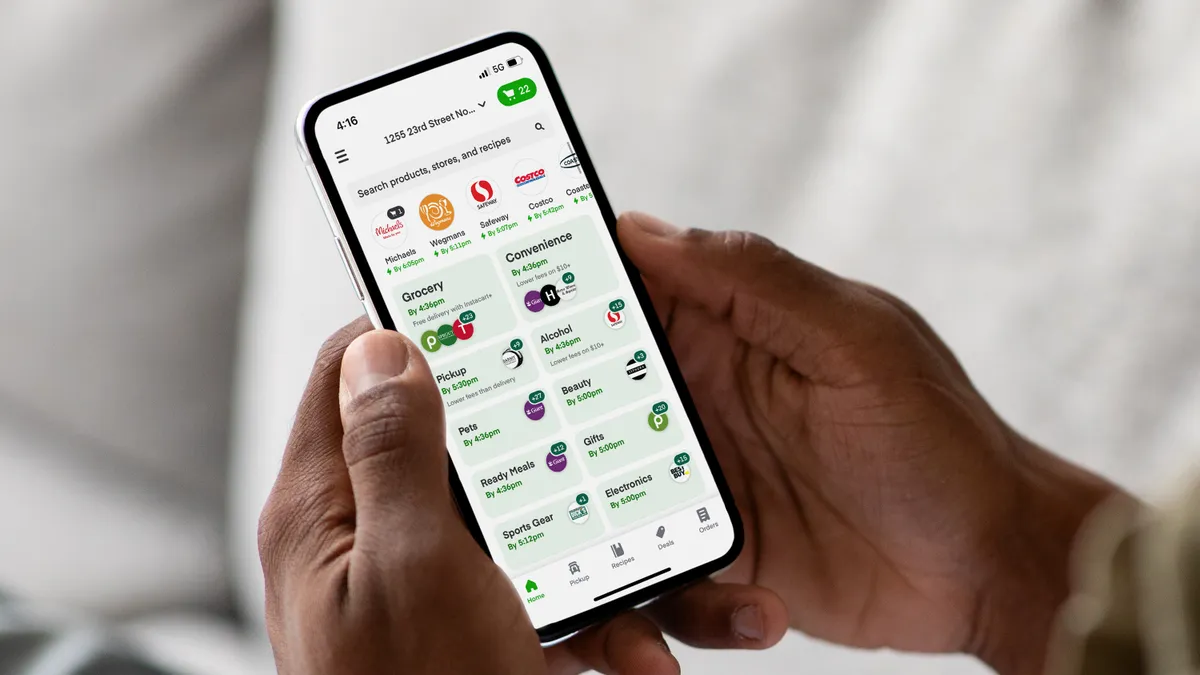Dive Brief:
- Online grocery sales totaled $8.4 billion in January, a 1.2% drop compared with the same month last year, according to the latest monthly e-commerce report from Brick Meets Click and Mercatus.
- Mass merchants continue to bring in new online shoppers with their wide selection and focus on low prices. The channel saw a 20% increase in monthly active users (MAUs) — the most engaged group of online shoppers — in January, while grocery MAUs declined by 6%, according to the survey.
- Mass merchants are winning over valuable shoppers via e-commerce amid heightened consumer price sensitivity — and winning them back may be challenging for grocers.
Dive Insight:
Online grocery sales growth has slowed over the past year or so as people have resumed normal shopping habits, but the shift of e-commerce consumers toward mass merchants during that time period has been considerable, according to recent monthly surveys from Brick Meets Click and Mercatus.
In addition to heavily outpacing grocers in welcoming some of the most active online shoppers to their platforms, mass merchants are also seeing high levels of satisfaction with their services. The firms’ newest survey, which was conducted between Jan. 30-31 with 1,735 adults, found that just over 50% of respondents said they plan to use a grocer’s online service again in the next 30 days. The percentage who said the same for mass merchants was 14 percentage points higher, marking the largest gap ever measured in the monthly surveys.
“This large gap in repeat intent is concerning and should raise a red flag for conventional grocers,” David Bishop, partner with Brick Meets Click, said in a statement accompanying the January survey results.
In December, the gap in repeat intent rates between grocery and mass was 10 points. In December 2021, consumers’ repeat intent was equal between the two channels.
Bishop said the explanation for the wide gap could come down to pricing, service-related costs or disparities in consumer experience across various platforms.
Retailers like Walmart and Target have heavily promoted their online shopping options as an accompaniment to in-store shopping. When Amazon Fresh announced recently it would add delivery fees of as much as $10 to orders, Walmart poked fun at the news on social media, noting its Walmart+ membership service offers free delivery on orders over $35.
Among the three e-commerce channels, pickup saw the highest growth during January, with sales increasing year-over-year by almost 3% to $4.1 billion. Delivery sales increased less than 1%, accounting for around $3 billion, while ship-to-home service plummeted more than 13%, tallying $1.3 billion in sales.
The decline in sales among ship-to-home services underscores the degree to which shoppers have resumed in-store shopping and moved away from online-only providers that were in such high demand early in the pandemic. Companies like Boxed and Blue Apron have struggled financially in recent months as a result.
Although online grocery sales are growing at a much slower pace than they did in 2020 and 2021, they’re expected to grow steadily over the next several years. Brick Meets Click and Mercatus said last month they expect grocery e-commerce to see a compound annual growth rate of 11.7% over the next five years, accounting for 13.6% of overall grocery spending by 2027.













